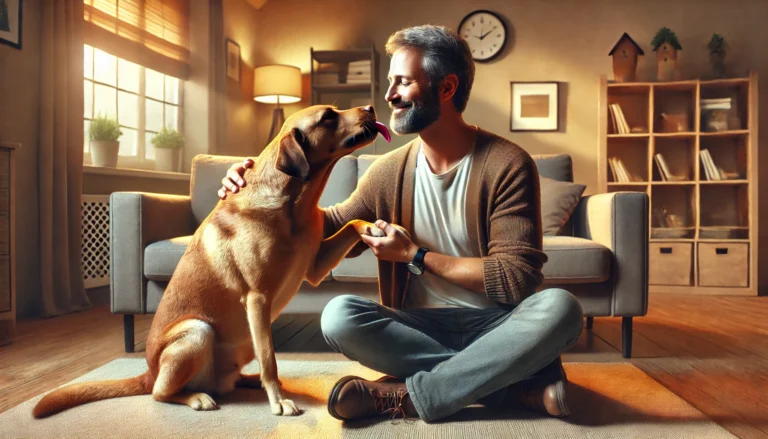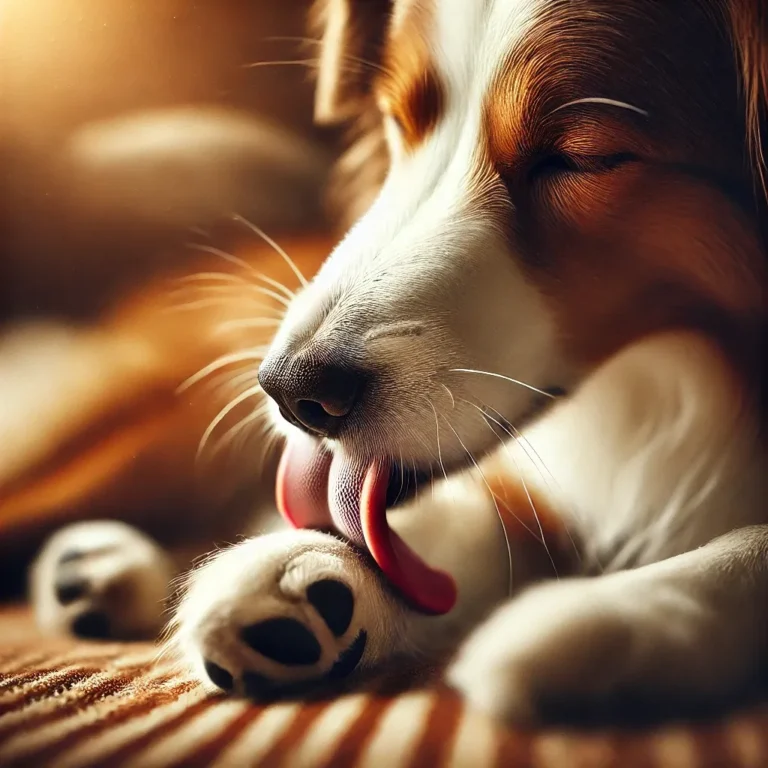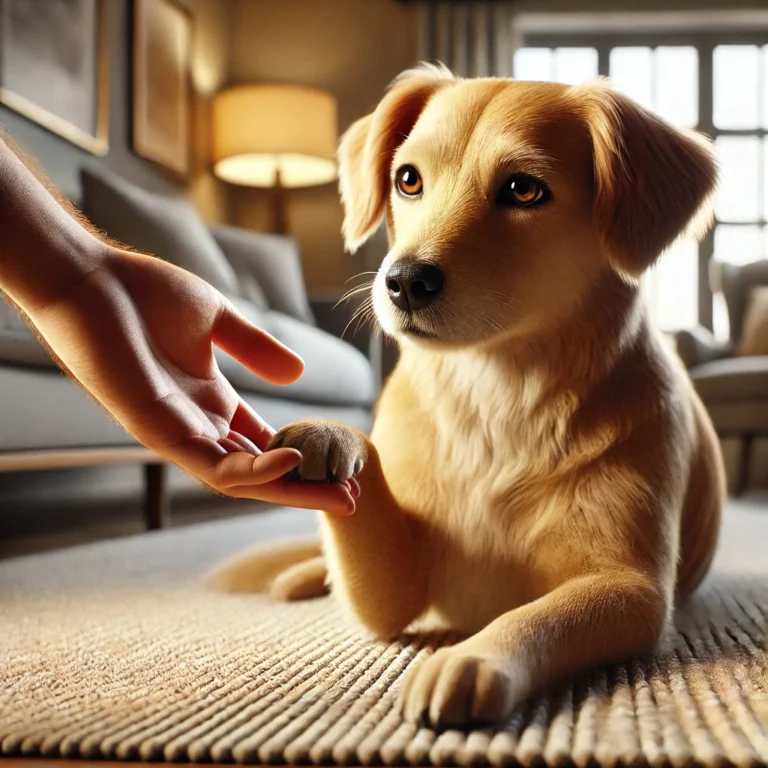clingy dog behavior (Velcro dogs)
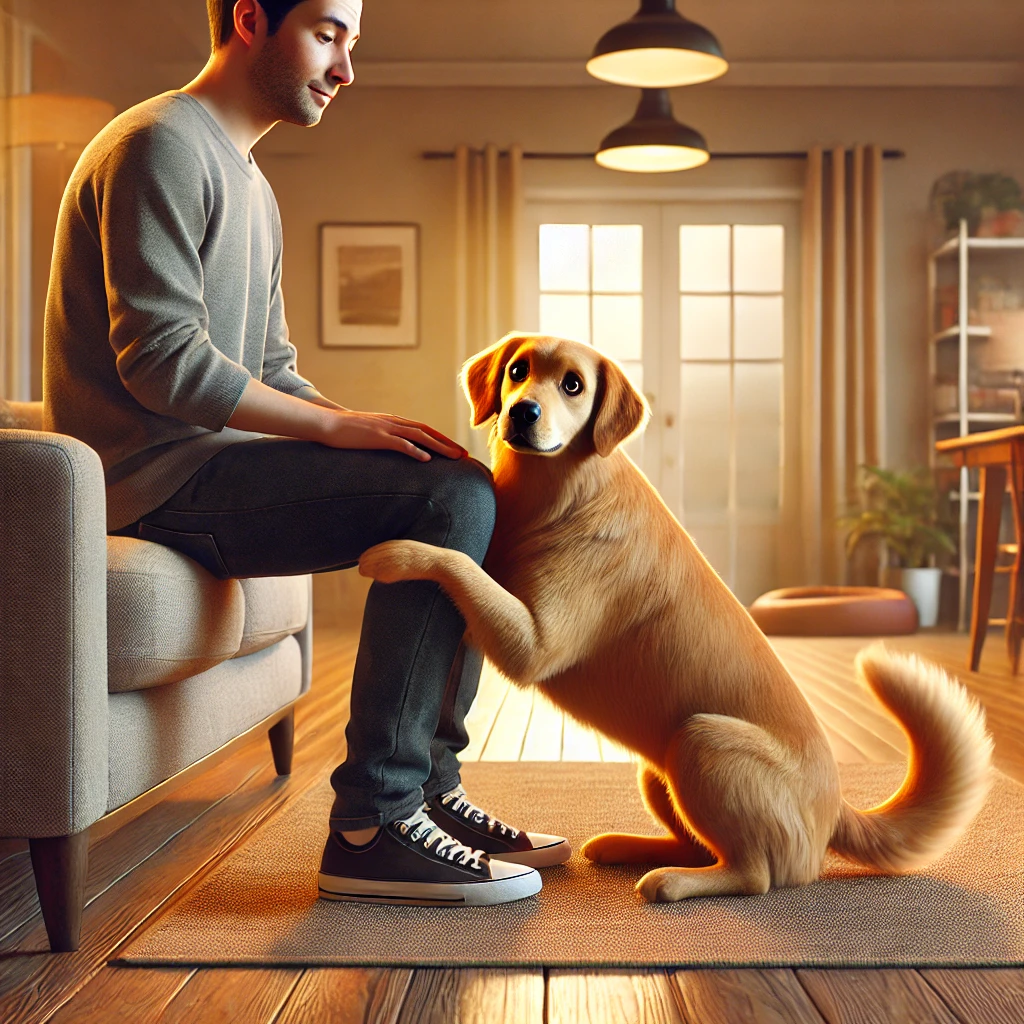
Clingy dog behavior refers to a dog’s persistent attachment to their owner, often showing signs of anxiety, distress, and a need for constant companionship. This type of behavior is usually characterized by the dog following their owner everywhere, whining for attention, and seeking physical contact. Some dogs may become overly dependent on their owners, leading to clingy dog behavior that can interfere with daily life.
If you’re wondering, “why is my dog so clingy?“, this behavior could stem from emotional or psychological factors, breed tendencies, or past experiences. Understanding the root causes of clingy dog behavior is essential for managing and improving the situation.
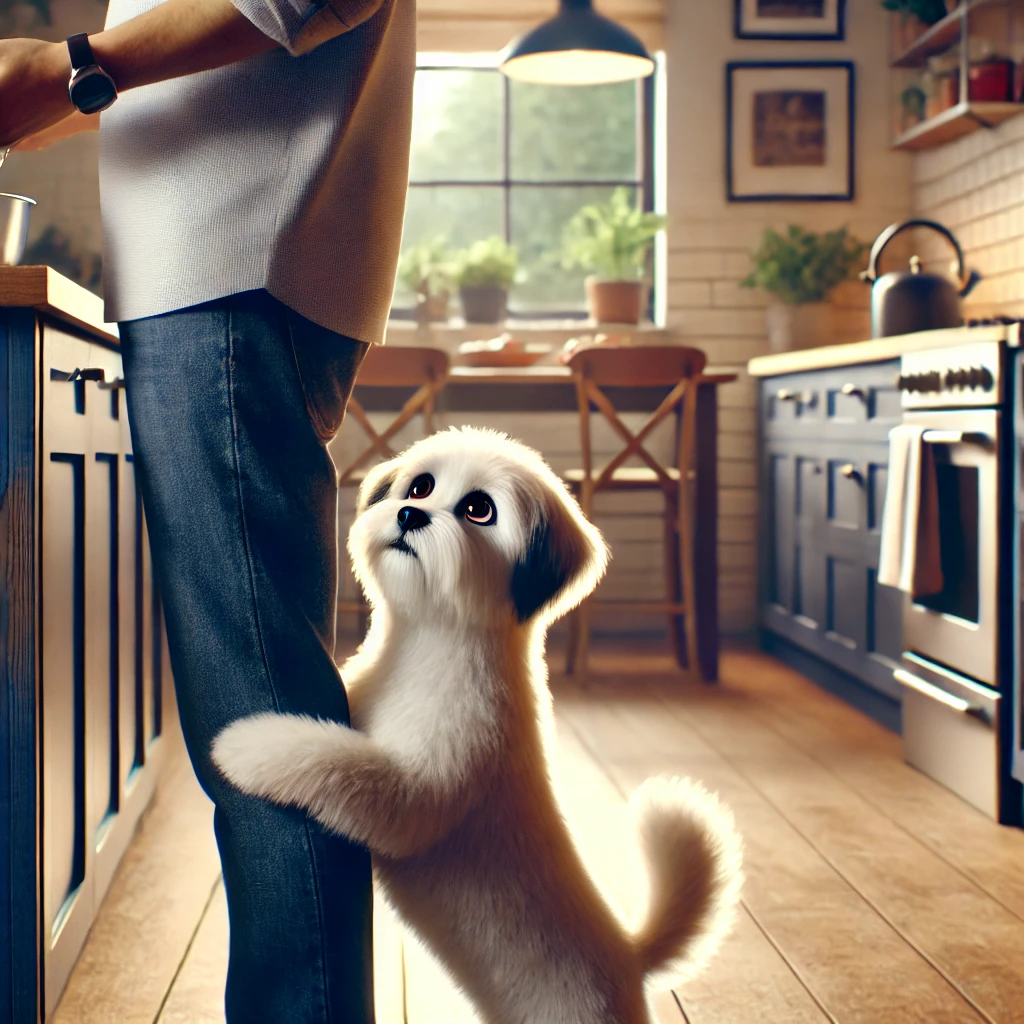
Why is My Dog So Clingy? Exploring the Causes of Clingy Dog Behavior
1. Separation Anxiety and Clingy Dog Behavior
One of the most common reasons for clingy dog behavior is separation anxiety. Dogs with separation anxiety often exhibit distress when they are apart from their owners. This behavior can manifest as excessive whining, barking, or even destructive behavior when the owner is out of sight. If your dog becomes overly attached and follows you everywhere, they may be trying to cope with the anxiety of being alone.
When dogs are clingy due to separation anxiety, they tend to display signs of clinginess when the owner leaves the room or house. This can include whining, pacing, or even destructive behavior like chewing on furniture. Separation anxiety is a condition that many dogs experience, particularly if they have had previous traumatic experiences.
2. Health-Related Issues Contributing to Clingy Dog Behavior
Sometimes, clingy dog behavior is a result of physical discomfort or illness. If a dog suddenly becomes more clingy, it could be a sign of pain or discomfort caused by health problems such as joint pain, digestive issues, or even more serious conditions like infections or internal injuries.
If your dog’s behavior changes suddenly and becomes unusually clingy, it’s important to consult with a veterinarian to rule out any medical causes. This is particularly crucial if the clinginess is accompanied by signs of distress, lethargy, or changes in eating habits.
3. Clingy Dog Behavior Due to Insecurity or Lack of Confidence
Some dogs become clingy because they feel insecure or lack confidence. This is often seen in dogs that have been rescued, have undergone trauma, or have not been properly socialized during their developmental stages. These dogs may find comfort in staying close to their owners and seek constant reassurance.
If you notice that your rescue dog follows you everywhere, it might be a sign that they are still adjusting to their new home and need time to feel secure. Clingy dog behavior in this case is a coping mechanism that helps the dog deal with their insecurity and fear.
4. Breed Characteristics and Clingy Dog Behavior
Some dog breeds are naturally more clingy than others. Breeds like Yorkies, Golden Retrievers, Cavalier King Charles Spaniels, and Pugs are known for their affectionate and dependent nature. If you own one of these breeds, you might find yourself asking, “why is my dog so clingy?” These dogs typically form strong emotional bonds with their owners and may show clingy dog behavior more than other breeds.
If you’ve ever wondered, “why are Yorkies so clingy?” or “are labs clingy?“, it’s because certain breeds are genetically predisposed to be more emotionally attached and require constant companionship. Clingy dog behavior in these cases may be amplified by their genetic predisposition for affection and attachment.
Signs of Clingy Dog Behavior
Recognizing the signs of clingy dog behavior is essential for understanding how to address it. If your dog is constantly seeking attention and companionship, they might be displaying these common behaviors:
- Following You Everywhere: If your dog follows you from room to room, whether you’re cooking, cleaning, or simply walking around, it’s a sign of clingy behavior.
- Constant Whining or Crying: Dogs that whine or cry whenever you leave them alone or even when you leave the room are often dealing with separation anxiety or clingy dog behavior.
- Refusal to Be Alone: A dog that is extremely clingy will refuse to be left alone and may become agitated or destructive if you try to separate from them.
- Excessive Physical Contact: Some clingy dogs may insist on being physically close to you at all times, whether by sitting in your lap or leaning against you constantly.
What Does It Mean When a Dog Follows You Everywhere?
If you’ve asked, “why does my dog follow me everywhere?“, it could indicate clingy dog behavior. Dogs naturally form attachments to their owners, but when they begin following you everywhere, it’s often a sign of anxiety, insecurity, or even boredom.
This behavior might also suggest that your dog is emotionally dependent on you for comfort and security. If your dog is always at your heels, it might be seeking reassurance from you. Understanding this behavior and addressing the root cause of it can help reduce the need for constant attention.
Managing Clingy Dog Behavior: How to Help Your Dog Become More Independent
While clingy dog behavior can be challenging, there are several steps you can take to help your dog become more independent and comfortable being alone. Here are some strategies to manage your dog’s clinginess:
1. Gradual Desensitization to Alone Time
If your dog exhibits clingy dog behavior due to separation anxiety, gradual desensitization can be an effective technique. Start by leaving your dog alone for short periods and gradually increasing the time you are gone. This helps them understand that being left alone is not a negative experience and that you will return.
2. Positive Reinforcement for Independence
Reinforce independent behavior by rewarding your dog when they choose to stay alone or in another room. This helps your dog associate being independent with positive outcomes. For example, if your dog lies down in another room without following you, reward them with treats or affection.
3. Interactive Toys for Distraction
One way to help alleviate clingy dog behavior is by keeping your dog distracted when you’re not available. Providing puzzle toys or interactive games can help keep your dog occupied and mentally engaged, reducing the likelihood that they will follow you around all day.
4. Creating a Comfortable, Secure Space for Your Dog
Establish a safe and comfortable space where your dog can relax without feeling the need to follow you. Whether it’s a cozy crate, a bed in a quiet room, or a special spot in the house, providing a designated area can help reduce clingy behavior and increase your dog’s confidence.
5. Consulting a Professional Trainer or Behaviorist
If your dog’s clinginess is extreme, seeking the help of a professional trainer or behaviorist may be necessary. These experts can assess the situation and provide you with strategies to address the underlying causes of clingy dog behavior.
Conclusion: Managing Clingy Dog Behavior for a Balanced Relationship
Clingy dog behavior is a common challenge for many dog owners, but with the right approach, it can be managed effectively. Whether your dog is exhibiting clinginess due to separation anxiety, insecurity, or breed tendencies, understanding the root cause is key to helping them become more independent and comfortable. By using positive reinforcement, gradual desensitization, and other techniques, you can reduce clingy dog behavior and create a healthier, more balanced relationship with your furry friend.
Remember, if clingy dog behavior is severe or linked to underlying health issues, it’s always best to consult a veterinarian or professional dog trainer for personalized advice and guidance.
1. What does it mean when a dog is clingy to you?
When a dog is clingy to you, it typically means they are highly attached and seek constant companionship. This behavior can stem from various factors such as affection, anxiety, or insecurity. Dogs might follow you everywhere, whine for attention, or insist on being physically close. Clingy behavior may also indicate separation anxiety, especially if the dog becomes distressed when left alone.
2. How do I stop my dog from being so clingy?
To stop your dog from being too clingy, focus on gradually building their independence. Start by leaving them alone for short periods and gradually increase the time apart. Reward independent behavior and use positive reinforcement when they stay in one spot or occupy themselves. Providing distractions, like interactive toys, and creating a comfortable, secure space for them can also help. In cases of severe clinginess, consult a professional dog trainer.
3. How do you know if your dog is too attached?
You may know your dog is too attached if they constantly follow you around, whine for attention, or become anxious when you’re out of sight. Other signs include refusal to stay in a room alone, excessive licking, or being overly dependent on your presence. If the attachment interferes with daily activities or leads to distress when separated, it might indicate unhealthy clinginess.
4. Which dog breed is clingy?
Certain dog breeds are naturally more clingy due to their affectionate or dependent nature. Breeds known for being clingy include Yorkies, Golden Retrievers, Cavalier King Charles Spaniels, Pugs, and Chihuahuas. These breeds typically form strong bonds with their owners and seek constant companionship. However, clinginess can also be influenced by a dog’s environment and experiences.
5. Is a clingy dog good?
A clingy dog is not inherently bad; it depends on the context. Many owners enjoy the closeness and affection of a clingy dog. However, excessive clinginess can lead to issues such as separation anxiety and make daily life difficult. It’s important to strike a balance between providing affection and encouraging independence. If your dog’s clinginess is manageable and doesn’t cause distress, it can be a positive aspect of your relationship.
6. What breed of dog loves you the most?
While every dog has its unique personality, some breeds are particularly known for their loyalty and love towards their owners. Golden Retrievers, Labradors, Cavalier King Charles Spaniels, and Border Collies are often cited as breeds that are especially affectionate and emotionally bonded to their families. However, the level of love a dog shows depends on individual temperament, early socialization, and the bond formed with their owner.

